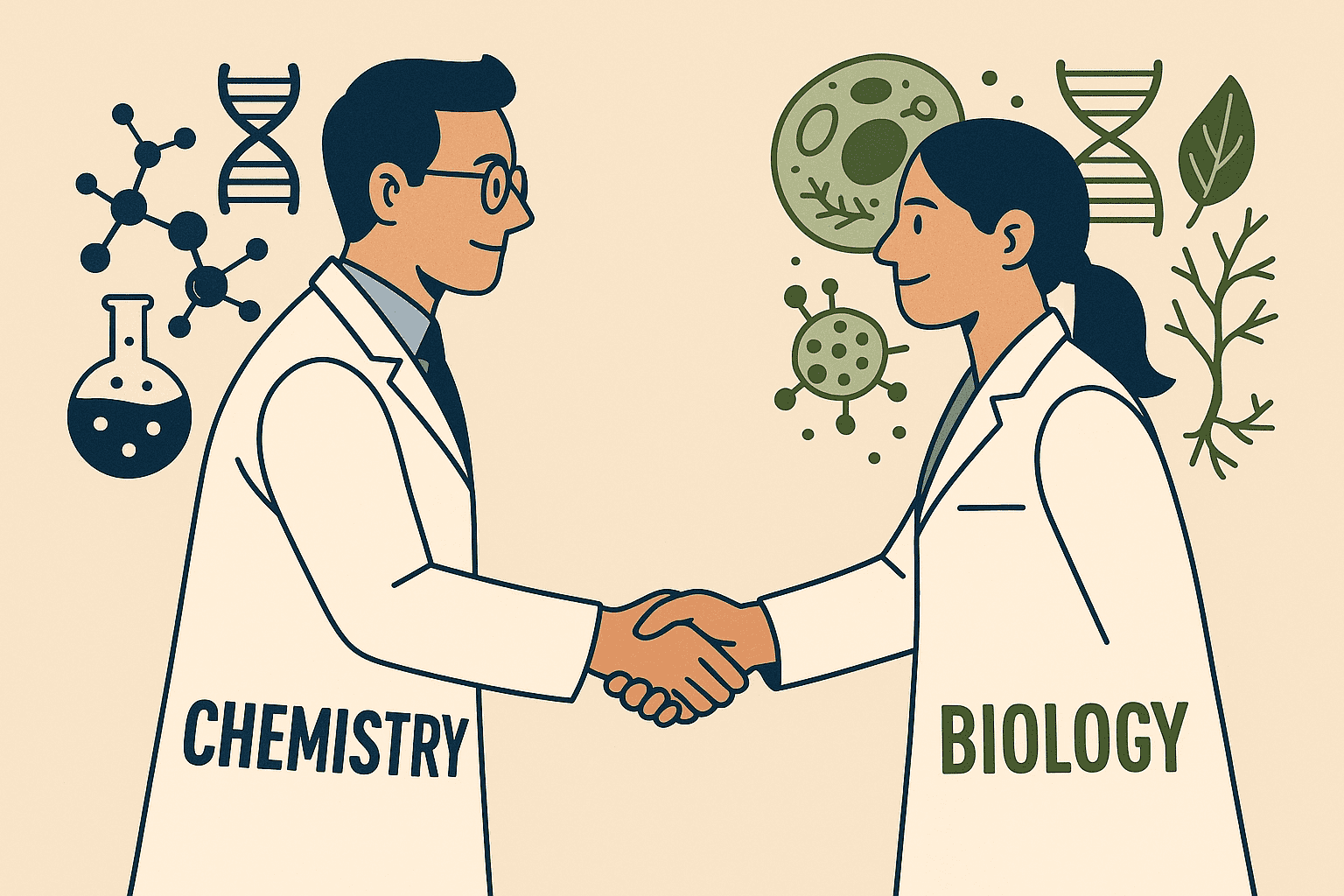To tackle big scientific problems, interdisciplinary research combines different fields. When chemistry and biology work together, new discoveries have the potential to transform environmental protection, food production, and medicine. Important developments like gene editing and targeted cancer treatments have already come from this partnership. Think about how mRNA vaccines work or how CRISPR gene editing helps treat illnesses; these are clear instances of how integrating these fields can result in innovation.
The Foundations of Interdisciplinary Research in Science
Knowing the Fundamentals of Chemistry and Biology
Chemistry is the study of mixtures and reactions. It aids in our comprehension of molecules and their transformations. Biology is the study of living organisms, including genes, cells, and ecosystems. In the past, these fields appeared to be distinct islands. Scientists have recently discovered that integrating their ideas can lead to much greater possibilities.The Need for Integration in Modern Science
For instance, if a virus is only studied biologically, chances for chemical treatments may be lost. Scientists can solve problems in new ways when they combine different points of view. We can create more intelligent medications and better environmental solutions thanks to this combination.
Tools and Techniques Enabling Collaboration
Multidisciplinary research is made easier by new equipment. Scientists can see how molecules affect living cells thanks to high-tech tools like chemical sensors, computer simulations, and advanced microscopes. These days, universities have research facilities and shared programs that support interdisciplinary work. These facilities bring together specialists from different disciplines.
Key Areas Where Chemistry and Biology Intersect
Drug Discovery and Development
Testing chemicals for biological effects is a step in the creation of new medications. Compounds are designed and made by chemists. Biologists then test them on animals and cells. This collaboration resulted in the creation of gene editing tools such as CRISPR-Cas9 and targeted cancer treatments.
Synthetic Biology and Bio-engineering
Scientists construct biological components using chemical principles. They create everything from synthetic cells to poison-detection sensors. These developments aid in the development of sustainable manufacturing techniques, biofuel production, and new medications.
Environmental and Agricultural Applications
Additionally, biology and chemistry cooperate to maintain the health of our planet. Microbes and chemicals are used in bioremediation to remove pollutants. Scientists create bio-based pesticides and fertilisers that are more efficient for crops and safer for the environment.
Molecular Diagnostics and Personalized Medicine
Early disease detection is aided by chemical tools. Special probes, for instance, can detect proteins or genetic mutations associated with disease. By combining this information with a patient’s genetic information, physicians can tailor treatments, improving the accuracy and efficacy of medicine.
Challenges and Opportunities in Interdisciplinary Research
Addressing Scientific and Logistical Barriers
It can be challenging to combine various approaches and vocabularies. Shared objectives and effective communication are essential for successful collaboration. Because different disciplines frequently have different support systems, funding can also be a challenge. However, in order to encourage collaboration, more grants are now concentrating on inter-field research.
Ethical and Safety Considerations
There are safety concerns when working with chemicals or genetically modified organisms. Strict guidelines and responsible material handling are required of researchers. Policies and public attitudes also affect what research can be conducted and how it is disseminated.
Future Directions and Emerging Trends
In the field of chemistry and biology, artificial intelligence is causing a stir. It speeds up research by assisting in the prediction of molecular behavior. Developments such as systems biology, which examines entire networks inside cells, pave the way for more individualized treatment and a deeper comprehension of illness.
Case Studies Demonstrating Impact
Development of mRNA Vaccines
To increase the stability of vaccines, chemists altered mRNA. This chemical modification aided in the initiation of immunological responses through biological processes. It’s an excellent illustration of how chemistry can increase biological efficacy.
CRISPR and Gene Editing Technologies
The means to precisely cut and paste DNA are provided by chemistry. This enables highly accurate gene editing by scientists. It has completely changed our perspective on how to improve crops and treat genetic diseases.
Environmental Biotechnology Innovations
Researchers have developed new methods for decomposing pollutants using chemicals and microbes. Additionally, they have created plants that are more resilient to pests and grow more quickly. These techniques are improving the sustainability of environmental cleanup and farming.
Actionable Tips for Researchers and Institutions
- Promote classes and training that span both fields.
- Build networks with scientists from different backgrounds.
- Invest in shared labs and research spaces.
- Apply for grants that focus on interdisciplinary work.
- Keep up with new tech and trends to stay ahead.
Conclusion
Bringing chemistry and biology together creates amazing chances for new discoveries. These collaborations help solve big problems in health, the environment, and food supply. To see more breakthroughs, researchers, teachers, and policymakers need to support joint projects. The future of science is at the intersection of disciplines—where teamwork sparks innovation and new ideas. Embracing this approach will lead to a healthier, safer, and more sustainable world.
– Dr. Jigar Y Soni
Dean, Faculty of Basic and applied sciences, Madhav University

